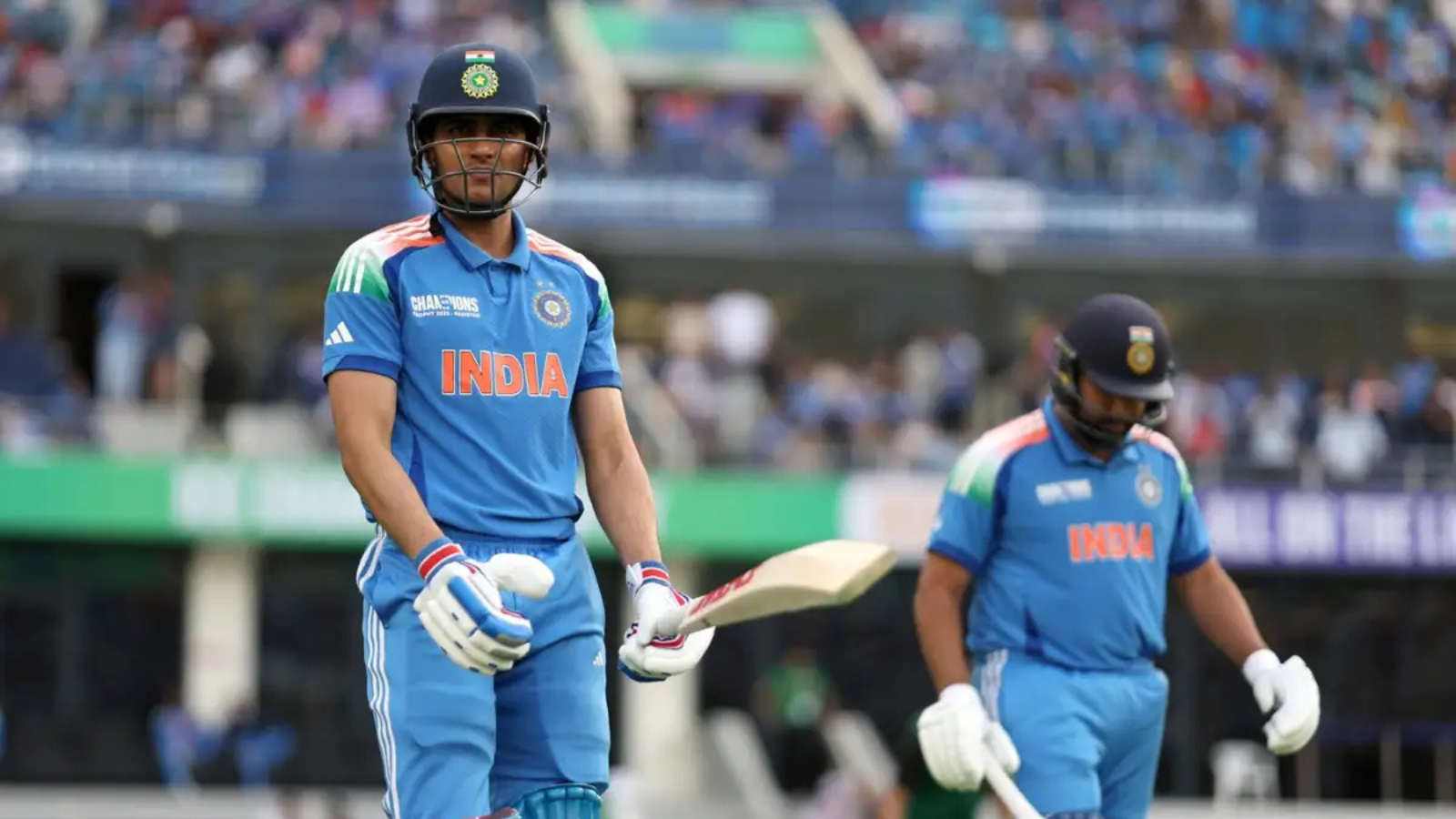
Five Indians and two Kiwis are included in the playing XI.

Team India was soaked in glory after winning their second consecutive white-ball ICC tournament – Champions Trophy 2025. The Rohit Sharma-led team defeated New Zealand by four wickets to lift the trophy. The skipper played a crucial knock of 76 in the final and was also awarded with the Player of the Match. However, his name was left out of ICC’s team of the tournament. Notably, opener Shubman Gill was also excluded.
Out of 11 players, almost half of the team is from India’s winning combination. The players included are Virat Kohli, Shreyas Iyer, and KL Rahul from the batting department. With the ball, ICC has included Mohammed Shami and Varun Chakaravarthy. Axar Patel is named as the 12th man.
As many as four players are from the runners-up squad. They are Rachin Ravindra, Glenn Phillips, Mitchell Santner, and Matt Henry. Two players from Afghanistan are also included, namely, Ibrahim Zadran and Azmatullah Omarzai.
Here’s what the playing XI looks like:
Rachin Ravindra’s performance was outstanding in the Champions Trophy 2025, amassing 251 runs at an impressive average of 62.75, including two centuries. His all-round excellence was evident not only with the bat but also with the ball as he made valuable contributions as a spinner. His remarkable displays earned him the Player of the Tournament award, solidifying his status as a true star.
With 216 runs at an impressive average of 72, including a century, the opener demonstrated his vital role in the Afghanistan playing XI. Ibrahim Zadran played a pivotal part in securing a historic win over England, scoring a massive 177 in the first innings which is the highest-ever individual score in the history of the tournament. His remarkable performance highlighted his importance to the team.
With 218 runs at an average of 54.5, including one century, Virat Kohli continues to prove why he’s the greatest of all time. The top-order batter delivered two remarkable performances, including an 84 in the semi-final against Australia, reaffirming that even at 36, he’s still in his prime. Playing in a league of his own, Kohli also crossed the significant milestone of 14K ODI runs, becoming just the third batter to do so.
India finally found their No.4 in Shreyas Iyer, who became the team’s highest run-scorer, finishing just 20 runs short of Rachin Ravindra. The Mumbai batter played like a wall in India’s middle order with 243 runs at an average of 48.6, including two fifties in the tournament. In the last four matches, his lowest score was 45 runs, showcasing his consistency in challenging conditions in Dubai. The Indian skipper rightly termed him a “silent hero.”
ALSO READ:
KL Rahul was dependable behind the stumps, making key DRS calls, and also delivered as a clutch performer with the bat in his role as India’s finisher. With 140 runs and a perfect average of 140 from four innings, he remained unbeaten three times. Rahul played crucial roles in India’s chases during the knockout games, with match-winning knocks of 42* against Australia and 34* against New Zealand, showcasing his value in high-pressure situations.
With 177 runs at an average of 59, two wickets, and five catches, Glenn Phillips proved himself to be an all-rounder of the highest calibre. He not only showcased why he’s considered one of the most dangerous batters but also displayed exceptional fielding skills for the Kiwis. Phillips took three stunning catches during the tournament, including a jaw-dropping grab against Virat Kohli in the last league game and Shubman Gill in the final. If you blink, you’ll miss watching this Kiwi star fly.
Azmatullah Omarzai was a valuable all-rounder for Afghanistan during the Champions Trophy 2025, amassing 126 runs at an average of 42 and taking seven wickets, including a pivotal 5/58 against England. His contributions with the bat in the middle order were crucial, while his bowling consistently made an impact. As the ICC Men’s ODI Cricketer of the Year for 2024, Omarzai lived up to the expectations, excelling with both bat and ball.
Mitchell Santner’s captaincy and bowling were outstanding throughout New Zealand’s impressive campaign, where they finished as runners-up. Despite another heartbreaking finish, Santner effectively managed the team with a limited pool of players. In addition to his leadership, he made crucial contributions with the ball, taking nine wickets at an average of 26.6 and an economy rate of 4.80.
Mohammed Shami proved to be a crucial asset, delivering consistent and dependable performances when needed most. He made an immediate impact upon his return, taking 5/53 against Bangladesh during India’s tournament opener. Shami continued to contribute in the semifinals and final, claiming four wickets across the last two matches. With nine wickets at an average of 25.8 and an economy rate of 5.68, he consistently rose to the occasion, fulfilling his role as a key bowler whenever the captain called upon him.
It was a significant loss to New Zealand that the leading wicket-taker was unable to play in the final due to injury, as the outcome might have been different. Throughout the tournament, Matt Henry was consistently taking wickets in every match. His best performance came with a remarkable 5/42 against the champions in the league match. With 10 wickets at an average of 16.7 and an economy rate of 5.32, Henry was one of the standout bowlers of the competition.
ALSO READ:
Varun Chakravarthy’s journey is truly remarkable. With only one prior ODI appearance before the Champions Trophy, the 33-year-old more than justified the selectors’ confidence in him. He claimed nine wickets across three crucial matches, demonstrating his talent. The mystery spinner finished with an outstanding average of 15.1 and an economy rate of 4.53.
For more updates, follow CricXtasy on Facebook, Instagram, Twitter, Telegram, and YouTube.